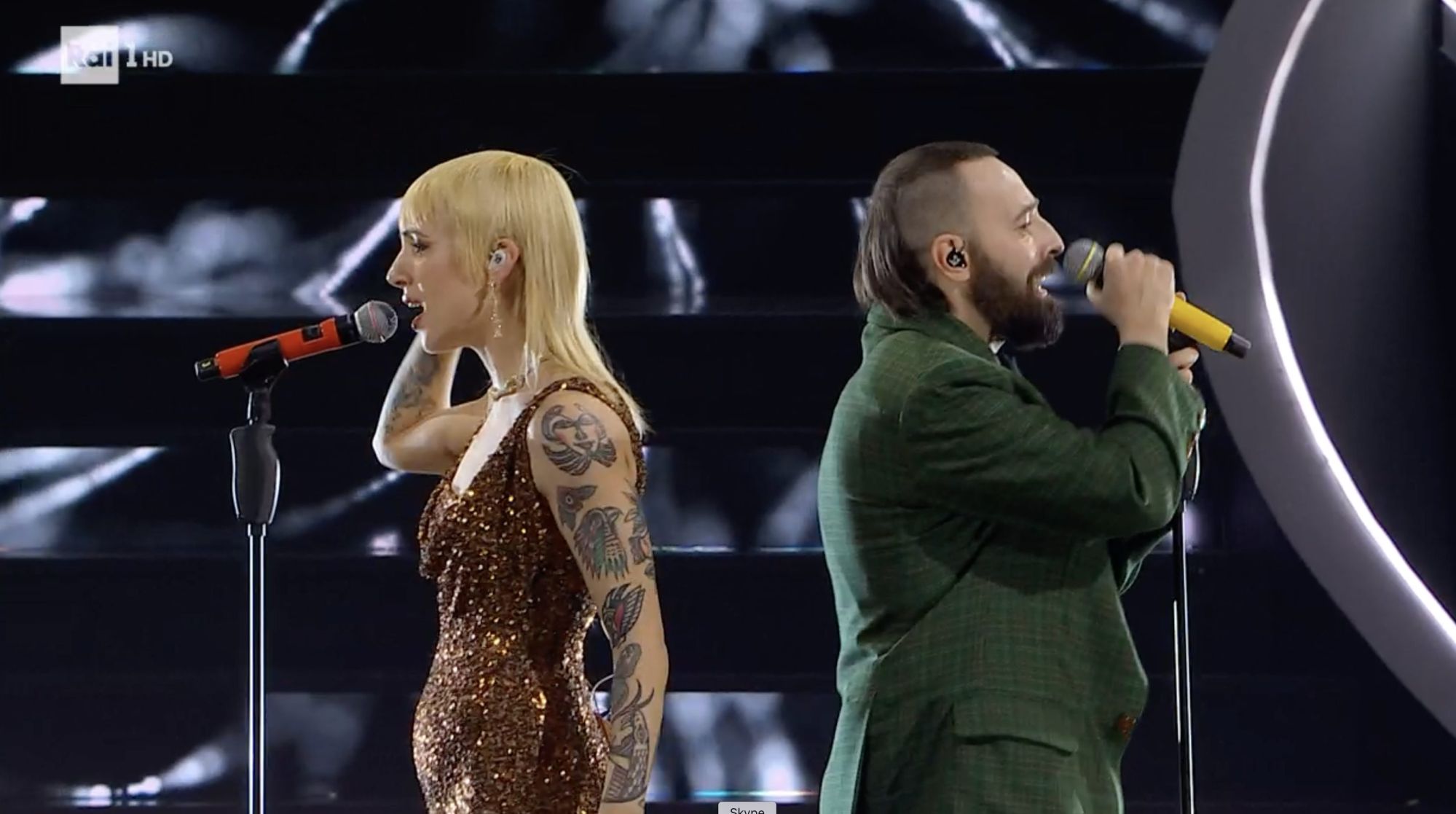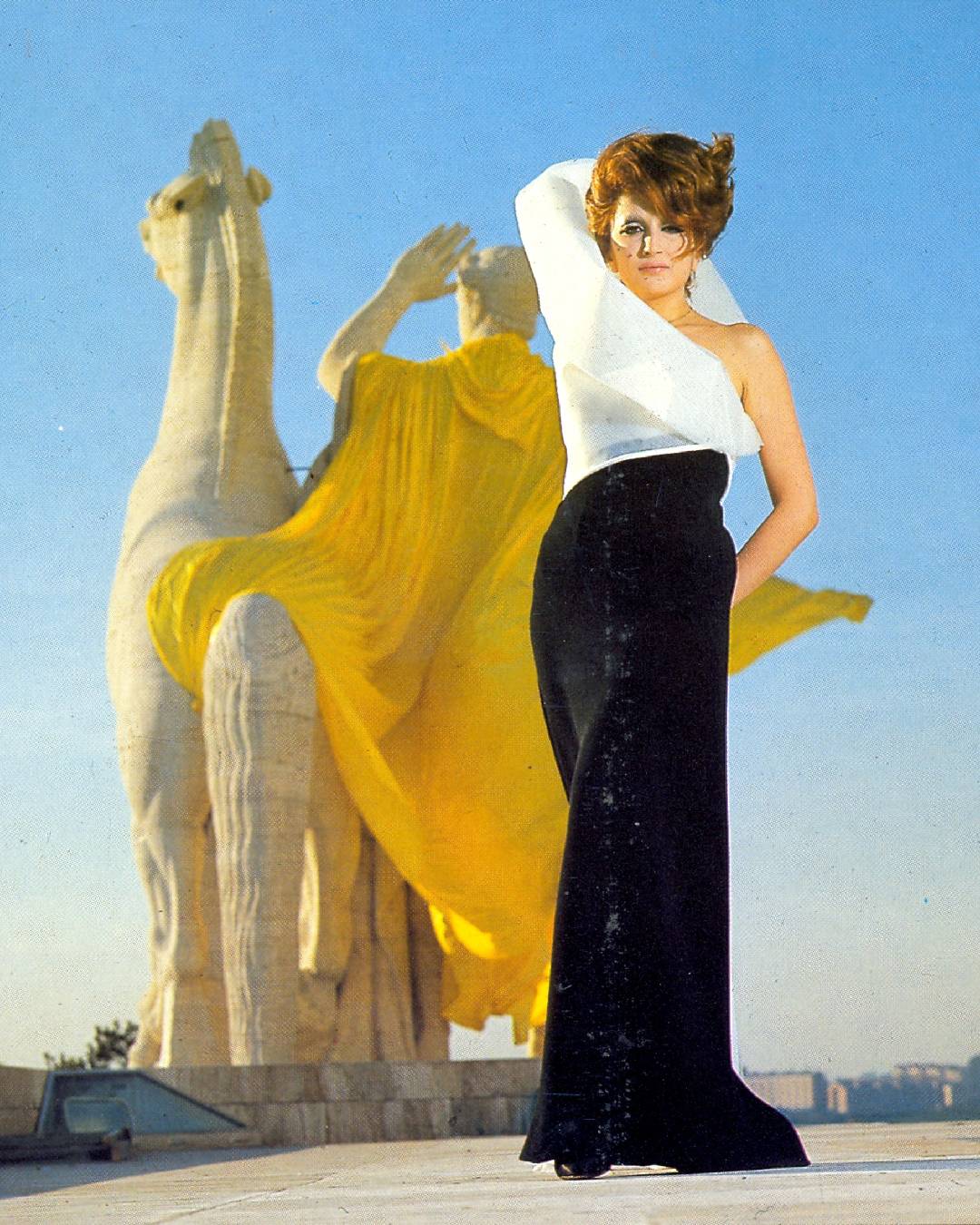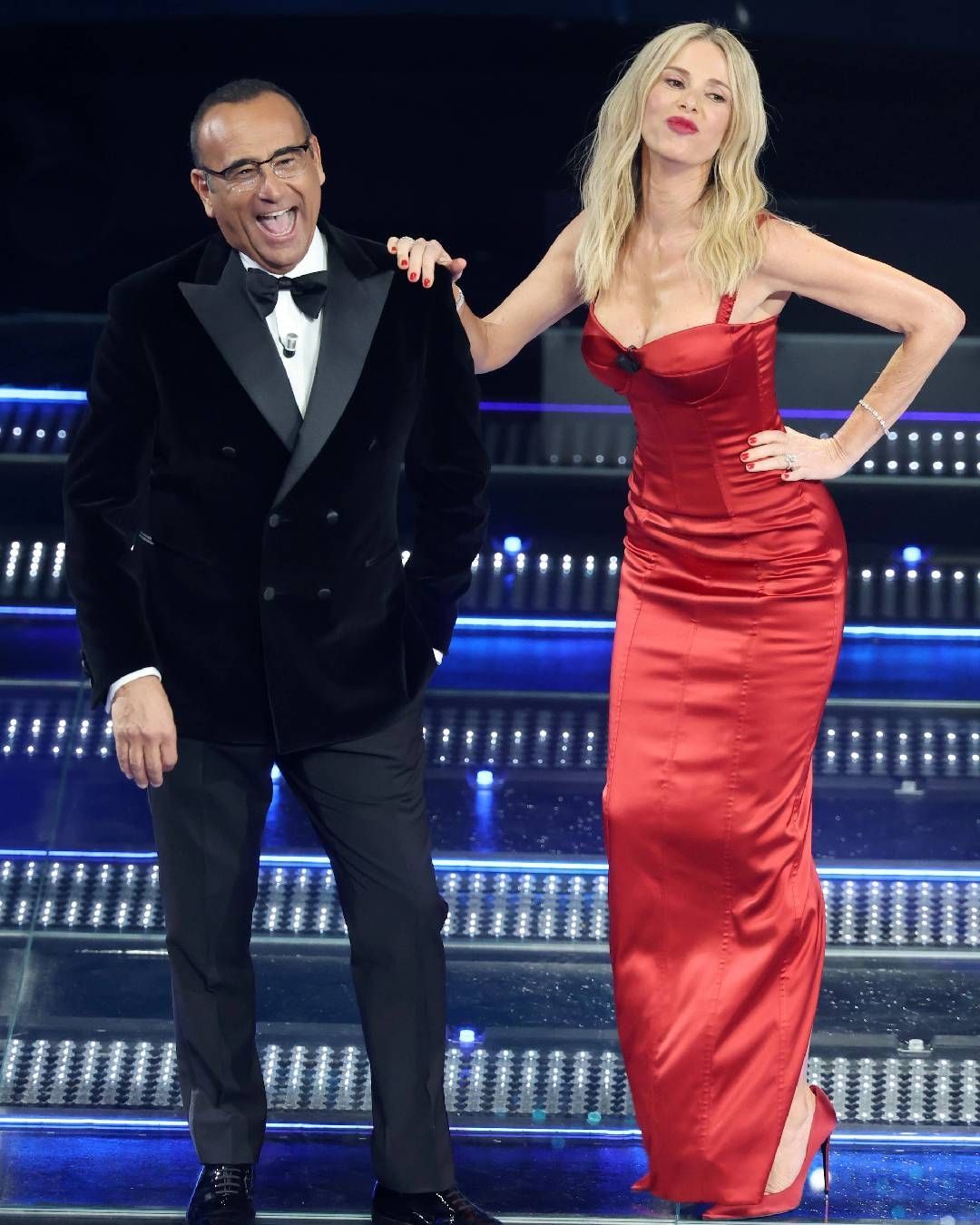
Simplicity on the Ariston stage There is still merit in delicacy
In recent years, Sanremo has been transformed from a crumbling reflection of a stagnant Italy into a great meme factory capable of blending embalmed Italian tradition with a younger culture. It goes without saying that the concept of 'younger culture' also entails a recognition of the importance of fashion, and indeed past editions of the festival have been a real feast for the eyes thanks to the work of a handful of stylist superstars who have appeared in recent years. This year, Sanremo is back with an unprecedented energy - but the sophisticated fashion that Achille Lauro, La Rappresentante di Lista and Mahmood brought to the Ariston stage has somewhat disappeared in favour of more codified options that can be categorised as 'stage outfits'. In other words, this year they are all dressed in variations of classic evening wear that shine with both sequins and metallic elements. On the second evening, however, there was a breakthrough: Colapesce and Dimartino presented themselves with very rare combined looks, i.e. not total looks ripped from the catwalk or tailored suits, but styled 'as they used to be' by Giuseppe Magistro. Specifically, they wore suits by Paul Smith and Sartoria Trinchese respectively, shirts by Gaelle Paris, jewellery by Damiani and shoes by Scarosso and Pierantoni. No instantly recognisable brands, then, but a few looks that deviated from the new Sanremo imagery, which is 90% glitter and sequins. For better or worse, could Colapesce and Dimartino represent a new and daring proposition for menswear? An idea of normcore that offers a new paradigm of transgression at the epicentre of the show TV, where face tattoos and genderless clothing no longer shock anyone?
That same evening, a few hours later, Angelo Duro spoke of transgression in his unconvincing late-night sketch - after all, even a broken clock tells the right time twice a day. What Angelo Duro was essentially saying is that the most absolute and banal normality today is true transgression. The idea that a suit can be worn as a suit and that's all, is a strangely audacious proposition, considering that the new uniformity of 'stage dress' has become the basic paradigm, now that the era of Achille Lauro and his cross-dressing is over and the provocative outfits of Maneskin have taken the ultimate shark leap. It's reminiscent of another music industry event, the Grammys, whose red carpet featured a fashion that many members of the public on Twitter and other platforms referred to as 'Hunger Games-level fashion'. Harry Styles, orphaned by Alessandro Michele's Gucci, was particularly out of time. He appeared in an EgonLab diamond jumpsuit that elicited more yawns than admiration - as well as comments about the silly absurdity of an outfit that was not even metaphorically clownish, but seemed inspired from the circus world. Had Harry Styles worn the plainer look of another brand (let us imagine, with some pomp, the green leather suit seen at Bottega Veneta's SS23 show), he would have paradoxically shocked everyone. Similarly, Maneskin might shock us if we caught her in jeans and a leather stud in neutral colours, like the rest of the rock singers, rather than wedding gowns, lamé jumpsuits or any form of hyper-decorated or hypersexy outfit we have seen so far. At a Spotify-organised ceremony in Los Angeles, the band wore entirely demure white outfits by Zegna, who, although in their element, seemed restful in their lack of exposed skin. In a world that is constantly on the hunt for visibility, discretion is a subversive act.
Paradoxically, it is Colapesce and Dimartino's outfit, which is made up of pieces from different brands and is not exactly hyper-luxurious, that best reflects the trend towards reduction, linearisation and minimalism that we have seen on the menswear catwalks in Milan and Paris. In fashion, the decorations are reduced, both visual and conceptual aggressiveness are diluted, the product becomes wearable and sensible, far from abstruse declarations and close to a reality that we would all like to get back in touch with. Unlike the blazers worn on the bare torso, the shirts open to the navel, revealing the body that is now athletic, or the seemingly transgressive details, the two Sicilian singers were buttoned up (admirable dictu) - as was Fausto Lama of Coma Cose, who was stunning in Vivienne Westwood. Of course, these are low-key outfits that do not sweep the audience away with their splendour, but that's the point: subtlety still has merit.



















































